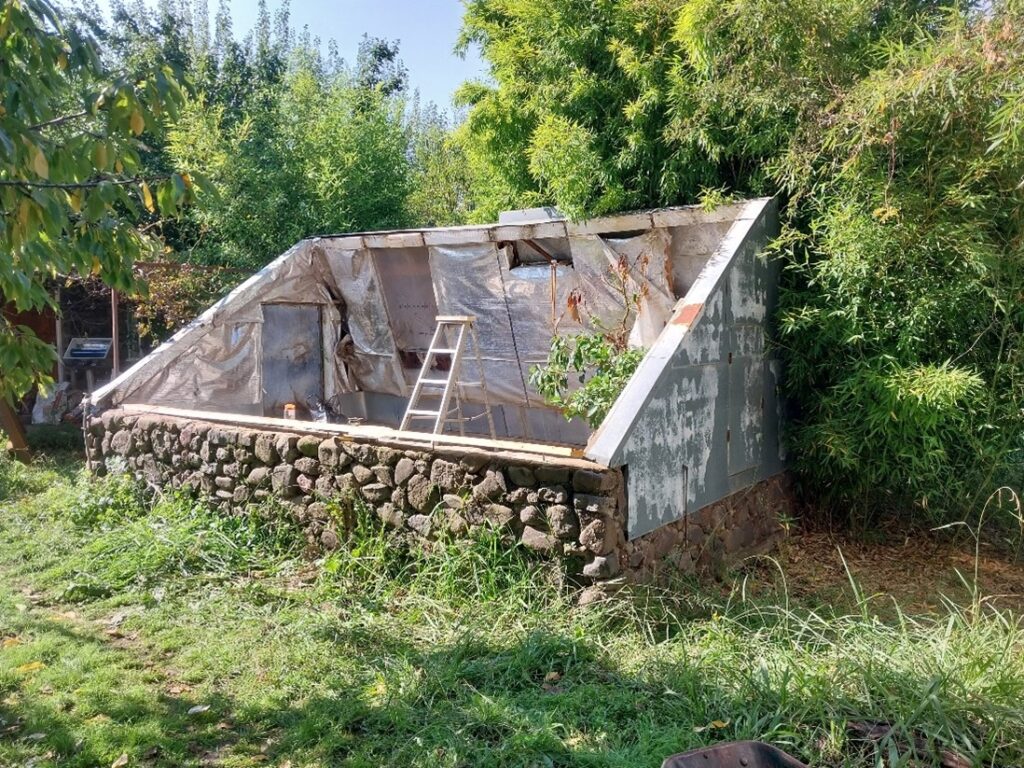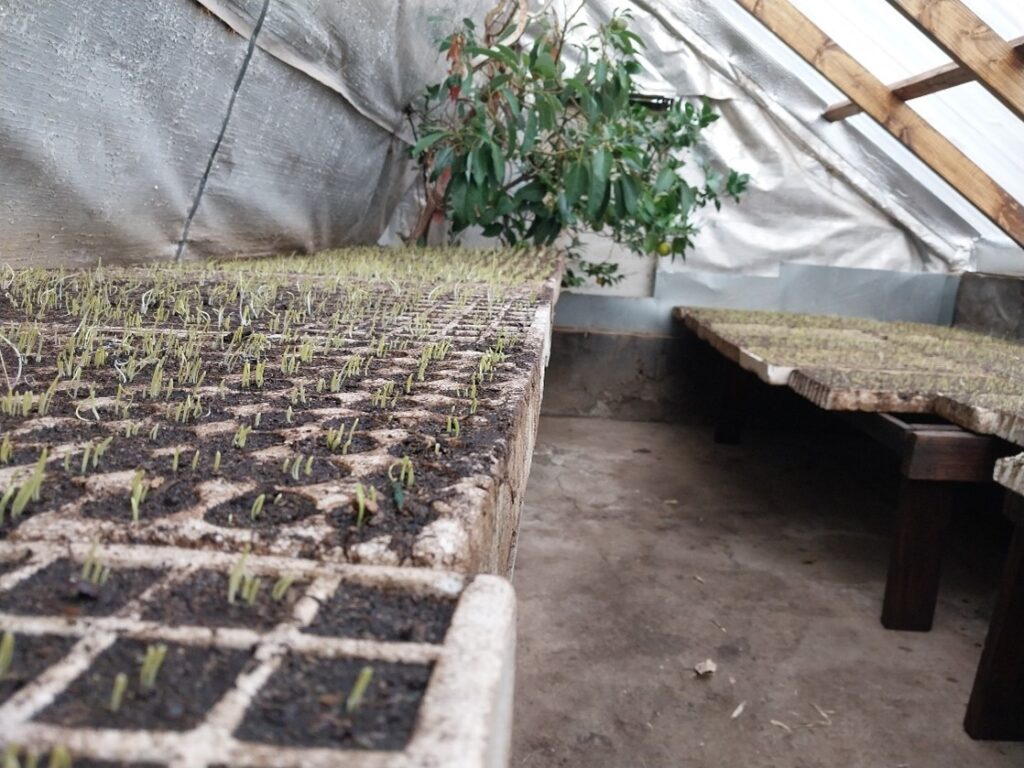In recent days we renovated a Brace greenhouse in my yard that was built 28 years ago. Greenhouses suffer from heavy moisture pressure and after so many years, the rafters were rotten and the plastic glazing deteriorated. We installed new rafters and polycarbonate. We will actually be constructing 3 of these for different village homes in conjunction with the WFP works commencing immediately.
There is a noteworthy background to this. Like Sweden and Finland, Lesotho suffers from rather severe winter weather conditions for 4 months. Food security and agriculture greatly benefit from greenhouses in the supply chain. Brace Research at McGill University began research on optimizing greenhouse geometry for energy efficiency and savings in the late 1960s and 70s when the first energy crisis hit NA. Conventional dome greenhouses have a terrible thermodynamic cycle. Tending to overheat during the day, and require supplementary heating at night. Brace design overcomes this defect. Much of the work was led by Dr. Tom Lawand, a close associate of mine for almost 30 years. He unfortunately suffered a stroke and is now no longer able to communicate. He sent several interns to BBCDC. Dr. Lawand was among the handful of solar energy engineering pioneers from the 1950s and 60s who did ground breaking research. Others included Alexander Whillier, Hoyt C. Hottel, Farrington Daniels, Harold Hays, Maria Telkes, Harry Tabor.
Another regional connection to Brace is a person by the name of Willi Surman, who ran a solar company in Ladybrand, RSA, next to Maseru. Willi did his graduate studies at Brace, and built many of the solar water heaters installed in Lesotho. He is originally from Switzerland. Many of these are now beyond their service life and being replaced. Returning to the greenhouses, the geometry and thermal inertia of water in the design provides a structure that never needs any supplementary heating in winter in Lesotho, and which can be more widely disseminated. Over the last 10 years in Lesotho, many domed greenhouse structures proliferated in Lesotho, which is a tragic failure because of the severe overheating they generate in summer, and equally atrocious winter night time performance.
Again, the issue of winter and solar water heating arises. While Willi’s solar water heaters had some frost tolerance, every 10-15 years in Lesotho, there would be anomaly of a -10C to -15C night event in winter, and his solar water heaters would disintegrate. Needless to say, this is a terrible mess to clean up and repair. We have plenty of experience. The flooded Sydney tubes used in low pressure water heaters have never broken in my experience. So, in any academic field some tracing of history is useful. The ups and downs of the solar business in Lesotho were often painful.
To end on a brighter note, the Brace greenhouse remains an effective and useful low-cost technology without any complications. It can produce food, space heating for a house when attached, and double as drier in summer. I am pleased that the WFP included it in our work package.
Regards, Ivan Yaholnitsky

Picture 1: Brace greenhouse built in 1996 being renovated (16/4/2024).

Picture 2: New rafters and profiled polycarbonate.

Picture 3: Onion seedlings preparing for spring planting (August).

